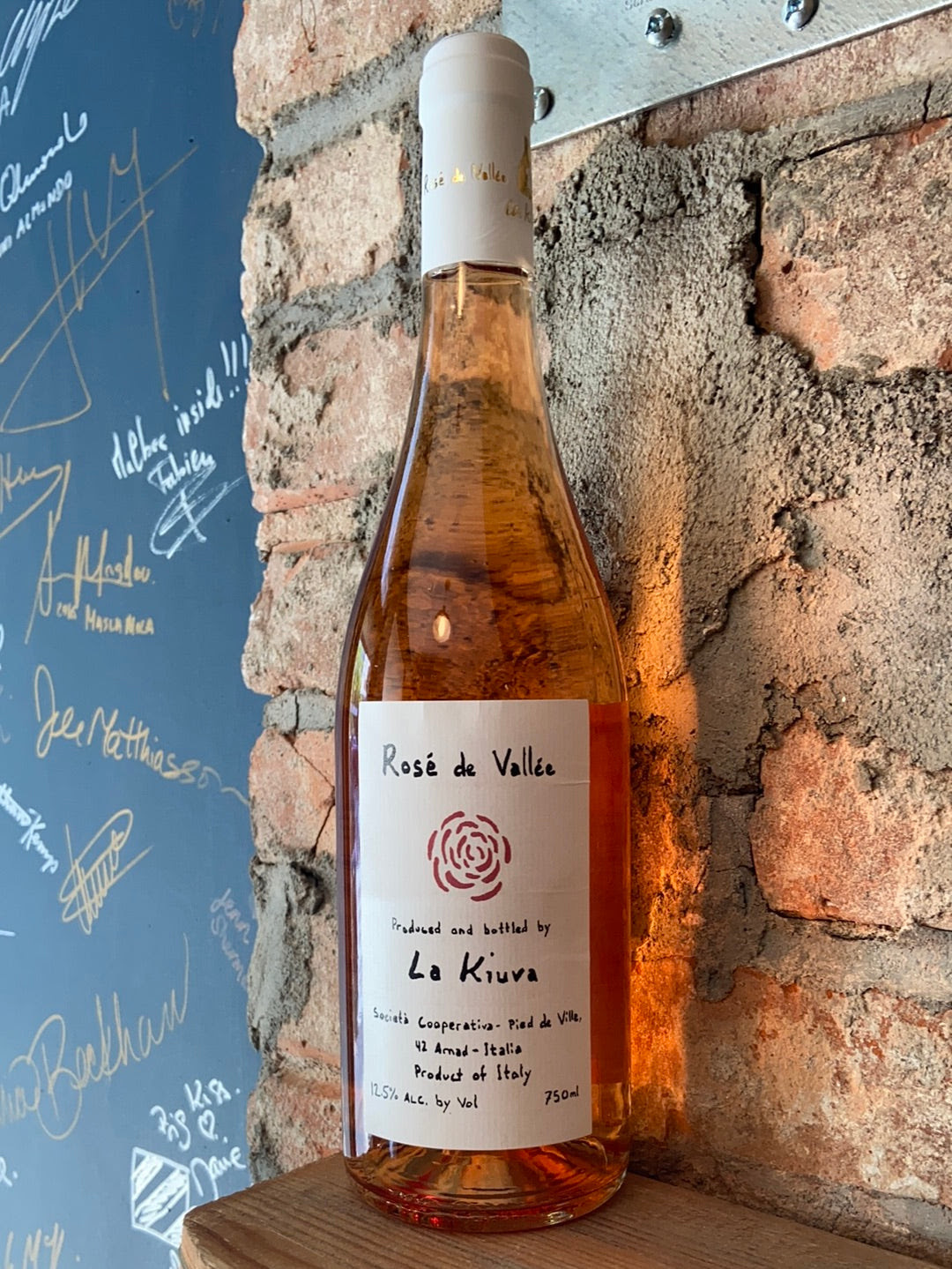DIRECT PRESS July 2021: Italian Mountain Wines
direct press | july 2021
CLIFFHANGERS
Italian Mountain Wines
The first part of a three-part series on Italy, this month we're focusing on some of the highest-altitude regions — not just in Italy, but in all of Europe. Above: Elisabetta Foradori in Trentino, the "Queen of Teroldego." Illustration by Jonathan Kemp
Italy is responsible for producing more wine than any country in the world. Some 1.2 trillion gallons of wine, in fact. Though it's one of the most ancient wine-producing countries in the world, the wide mix of landscape and cultures has always resisted easy classification. In 1855, when France's Napolean III commissioned the famous Bordeaux Classification, Italy wasn't even an officially unified country. All this is to say that Italian wine is terrifically overwhelming. So, we figured why not break things up into a few different months of the wine club so we can all drink and learn about Italy together? As long as I've been studying and buying wine, I still feel like I learn about a new Italian grape variety every month. It's kind of endless. Overwhelming, for sure, but I kind of like the idea that some part of our culture runs so deep that you can study it for an entire lifetime and still be surprised.
From the Alps to the Apennines, the mountain terrain dictates a lot of the terms of winemaking throughout Italy. In what are some of the highest-elevation vineyards in all of Europe, the challenges are significant. Vines often must be planted on dramatic slopes to maximize sunlight exposure, but modern machinery like tractors can't be used at such steep pitches, so work has to be done by hand, which is not easy on back-breaking mountainsides. Farming organically? Even harder. But we've picked a crop of producers who have been doggedly committed to farming without poisonous chemicals in the rugged mountain conditions.
In parts of the Aosta Valley, home of the famous Alpine peak Mont Blanc, it's cold enough that vines are trained close to the ground to absorb as much radiant heat as possible. Though the Aosta Valley is the least-populous in all of Italy, it is full of those grape varieties I mentioned early, that I just learned about this week (or more likely forgot about because I so rarely encounter them). Neyret and Gros Vien anyone? If you're in the 4 White group, you get to enjoy those varieties blended with Nebbiolo in the La Kiuva Rosée de Vallée.
While French is one of the official languages of the Val d'Aosta, German is the mother tongue of about a quarter of the population in the Alpine region of Alto Adige. Also known as South Tyrol, it was part of Austria until World War I. Grapes from Germany like Müller-Thurgau are perfect for the high altitudes there. The Cantina Furlani Bianco Alpino (4 Mix, 4 White) combines the fresh aromatics of Müller-Thurgau with Pinot Bianco and a complex, nutty grape called Nosiola, almost never found outside the region. Abbazia di Novacella reflects the Germanic influence even more clearly with their lean, minerally Grüner Veltliner, and their brisk, complex Sylvaner found in this month's 4 Mix and 4 White options. Franz Gojer's Vernatsch (4 Red) is made from a grape known as Schiava elswehere in Italy, but it's the same as the Trollinger grape that's planted in much of Swabia in Germany. It's an unmistakably cool-climate variety, making a very light red wine that is perfect with chill.
In Trentino, the same Schiava/Vernatsch/Trollinger grape is found in the similarly thirst-quenching Cantina Alpina Pale Mountain (Press 2). Here, it's blended with the most serious red grape of Trentino, Teroldego. Helped by the high-elevation and cooling Alpine winds, Teroldego makes impressive, structured red wines. To many in the wine business, Teroldego is inseparable from the masterful name of Elisabetta Foradori (4 Red). She brought Teroldego to a bigger world stage in the 1990s and then completely changed her farming and winemaking towards more natural and holistic approaches. It was a huge risk but it was what she felt was right. The wines got even better in my opinion, and continue to get better with her children now taking over the winery. Her son Emilio is involved in both the Foradori wines and the Cantina Alpina project.
It doesn't get much more mountainous than the Valtellina region of Lombardy, where vines are terraced into sheer, south-facing rock faces to absorb as much sunlight as possible. But the Nebbiolo grown there is a real revelation to anyone who is more familiar with Barolo and Barbaresco from the Piedmont. In Valtellina, producers like Sandro Fay (4 Mix, 4 Red) and ARPEPE (Press 2) make Nebbiolo into wines that are more nervy and delicate than those from the Piedmont, but no less crowd-friendly and satisfying. ARPEPE certainly makes wines that can age as long as many in Barolo or Barbaresco. But often they are more elegant due to the mountain influence.
Italy's mountains, of course, are not limited to the northern regions. The Apennines that run all the way down the central spine of Italy are home to one of my favorite producers of Aglianico, Madonna delle Grazie (4 Mix, 4 Red). Located in Basilicata, the Aglianico from this remote mountain area is grown on Mount Vulture, an inactive volcano. In Campania, we have the beautful, rustic mountain Fiano from Ciro Picariello (4 White) is one of the most unique but compelling white wines you'll encounter anywhere. That part of the Apennines is widely planted with Fiano since a medieval prince was so obsessed with it. Hopefully you'll be as inspired by it as he was.
And just in case you thought we forgot about the big volcanic mountains like Etna don't worry — we're giving Etna a whole month of it's own in September's Direct Press. August, as befits the summer, will be coastal island wines from Italy. But for July, enjoy the cool breeze flowing through these mountain wines.
Salud!
Jonathan & Kirk
|
|
|
|
|
|
|
|
















Leave a comment